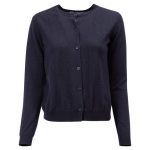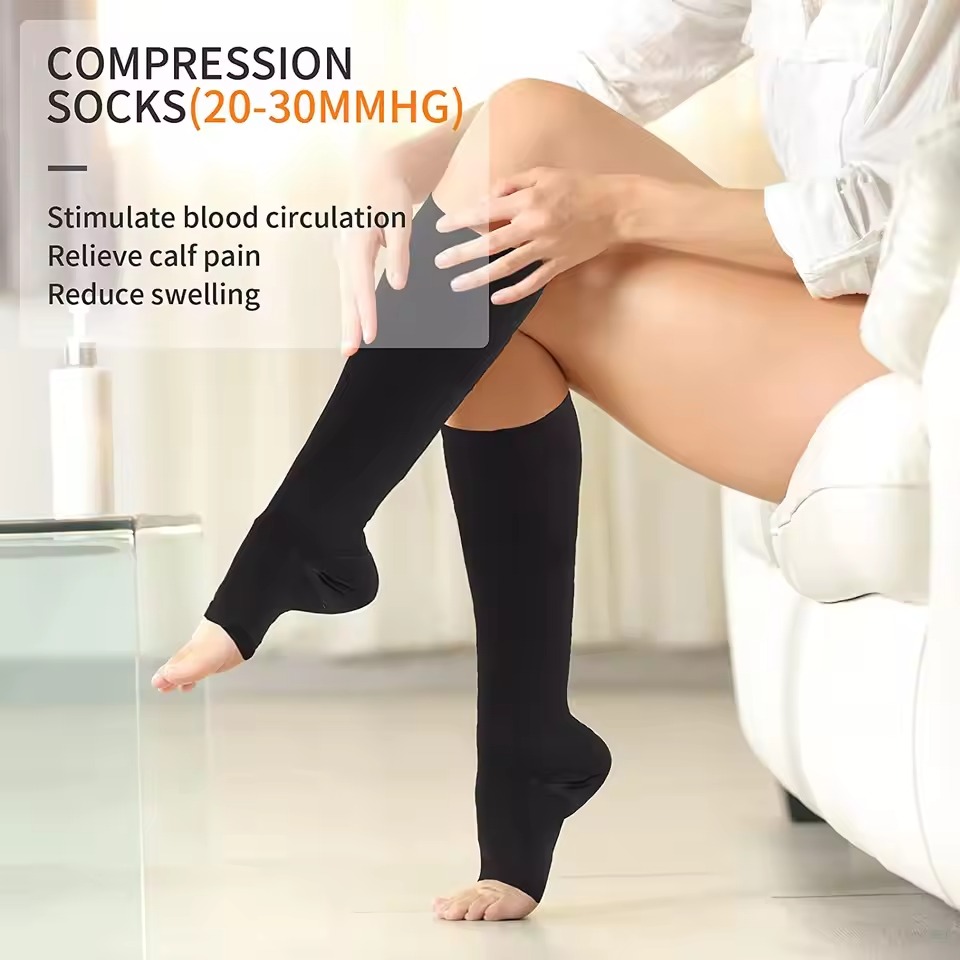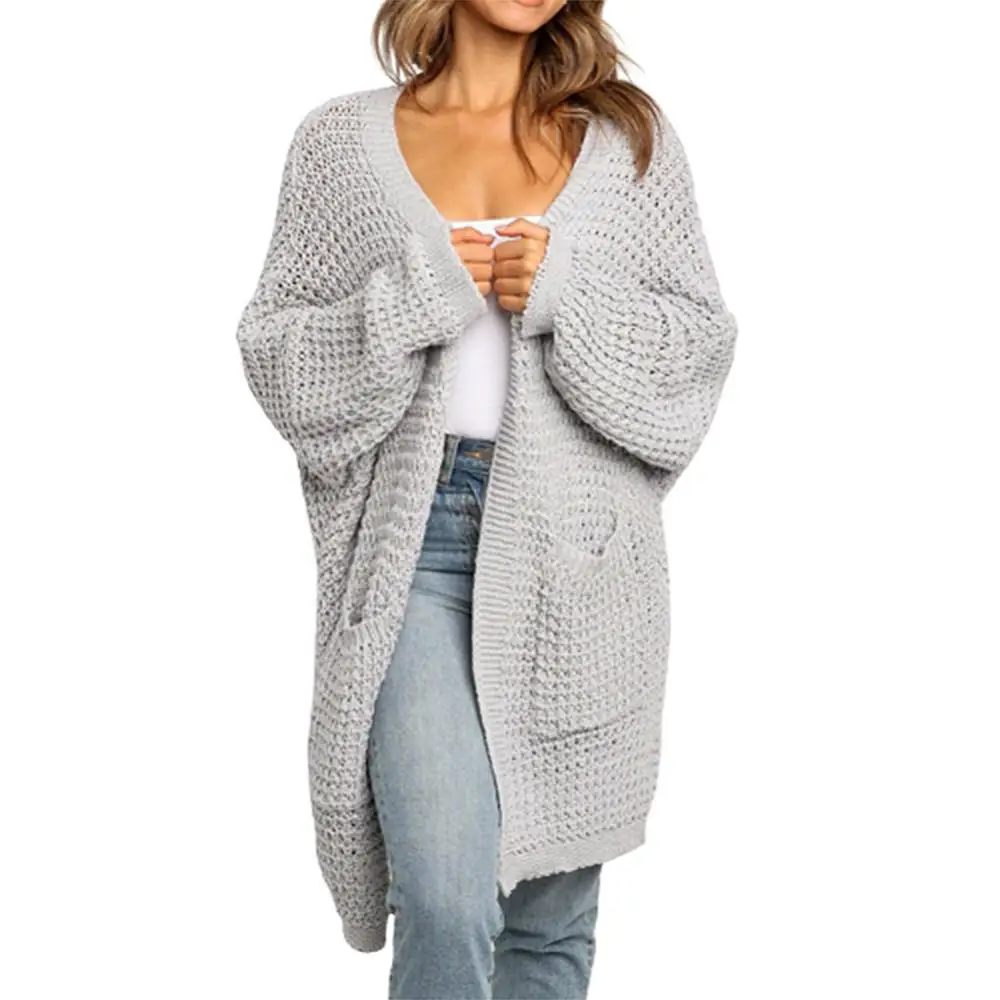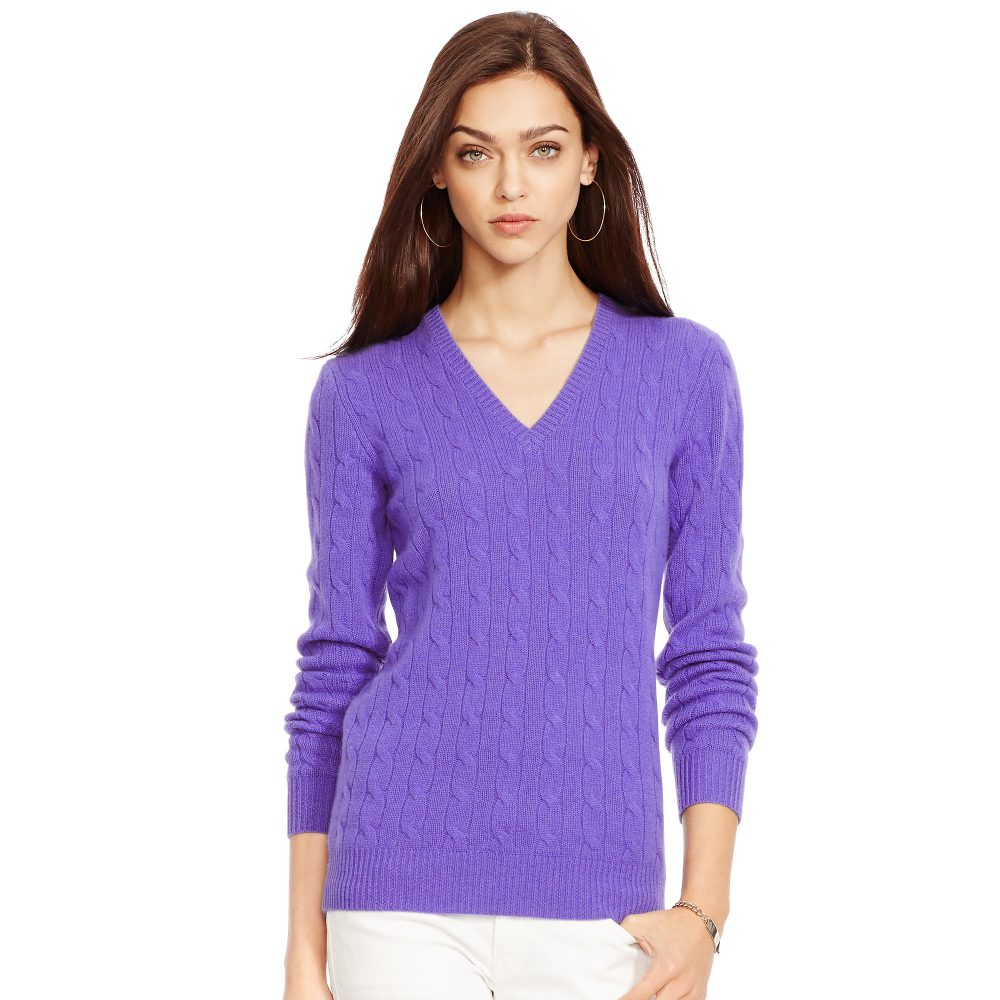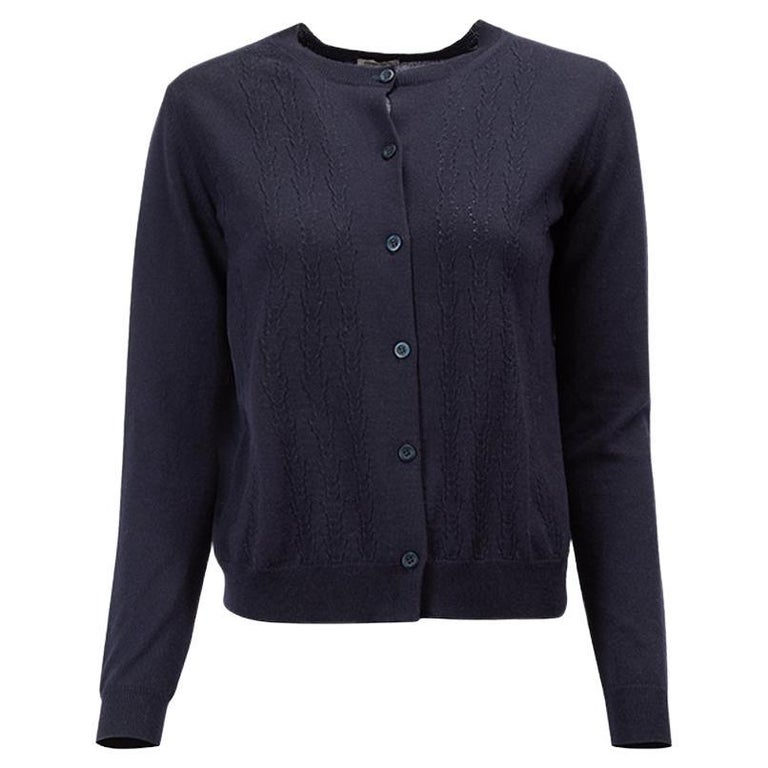Why Pregnant Women Need Compression Socks
During pregnancy, the body undergoes significant changes. Blood volume increases, and circulation may slow down. This often leads to a common discomfort known as edema, or swelling, particularly in the legs and feet. Compression socks for pregnancy provide a simple yet effective solution to this issue.
These socks are specially designed to exert gentle pressure on the lower legs. This helps to maintain blood flow, reduce the risk of varicose veins, and minimize swelling and fatigue. Good circulation is crucial during pregnancy, not just for comfort, but for overall health. It ensures that both the mother and the growing baby receive adequate oxygen and nutrients.
Wearing compression socks can also ease the heaviness and aching that many women experience in their legs. Pregnant women who stand or sit for long periods find them especially beneficial. The support from compression socks for pregnancy can also lessen the chance of developing Deep Vein Thrombosis (DVT), a more serious condition.
Furthermore, as the belly grows, the center of gravity shifts, which can affect posture and put additional strain on the back and legs. Compression socks assist in alleviating these strains by promoting better blood flow. This is why doctors often recommend compression wear as a proactive measure for maintaining comfort during pregnancy.
In sum, the reasons for pregnant women to use compression socks are numerous and compelling. From reducing discomfort to providing health benefits, these garments are an excellent addition to maternity care.
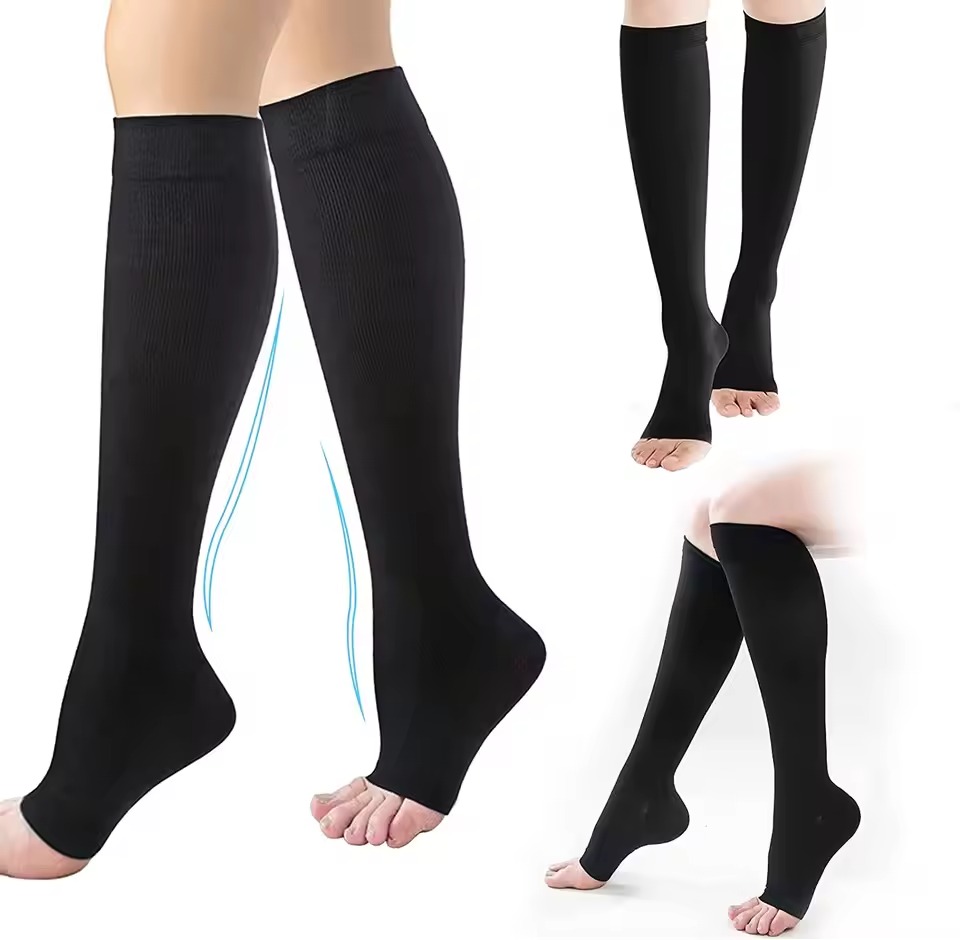
The Benefits of Compression Socks During Pregnancy
Compression socks for pregnancy go beyond simple comfort. They offer several health advantages that can make this special time safer and more enjoyable. Here are some noteworthy benefits:
- Reduced Swelling: These socks provide consistent pressure, which helps prevent the buildup of fluid in the legs and feet.
- Better Circulation: By supporting veins and blood flow, compression socks can improve overall circulation. This not only minimizes discomfort but is essential for the health of both mother and baby.
- Decreased Risk of Varicose Veins: The increased blood flow can also reduce the chances of developing unsightly and painful varicose veins common in pregnancy.
- Less Leg Pain: Many expectant mothers report that compression socks ease the pain and aches in their legs, making it easier to stay active.
- Reduced Fatigue: The improved circulation from wearing these socks helps to fight off fatigue, which is invaluable when energy levels often dip during pregnancy.
- Support for Back and Legs: As the baby grows, the extra support from compression socks can help alleviate the additional strain on the back and legs.
- Prevention of Deep Vein Thrombosis (DVT): With enhanced blood flow, the risk of blood clots forming in the veins of the legs is lower, protecting against DVT.
- Better Posture: They can contribute to stabilizing your center of gravity, which shifts during pregnancy, thus promoting better posture.
By combining these benefits, compression socks for pregnancy emerge as an integral part of prenatal care. They provide a simple, yet effective method to cope with some of the physical challenges that come with pregnancy. Considering the comfort and safety they can offer, it is clear why many healthcare providers recommend them as an aid during those nine months of change.
How to Choose the Correct Size and Fit
Choosing the right size and fit for compression socks during pregnancy is critical. Incorrect sizing can lead to discomfort and lessen the benefits these socks provide. To ensure you select the best fit, consider these points:
- Measure Your Legs: Take measurements first thing in the morning for the most accurate size. Measure the ankle circumference at the narrowest point, the calf at its widest, and the length from the heel to the back of the knee.
- Consult Size Charts: Use the measurements to reference against manufacturer’s size charts. This will help you find the correct fit according to the specific brand.
- Seek a Snug Fit: The socks should feel snug but not constrictive. There should be no bunching or slipping down as you wear them throughout the day.
- Consider Adjustable Options: Some compression socks come with adjustable features, like Velcro straps, that can accommodate changes in leg size during pregnancy.
- Check the Compression Level: The compression level is indicated in millimeters of mercury (mmHg). Pregnant women usually need mild to moderate compression, between 15-30 mmHg.
- Ask for Expert Advice: If you are not sure about the size, ask for advice from a healthcare professional or a certified fitter.
By following these steps, you can find compression socks for pregnancy that offer both comfort and the correct level of support for your legs.
The Different Types of Compression Socks Available
Choosing the right type of compression socks for pregnancy is essential to gain full benefits. Here are the different options you can find:
- Graduated Compression Socks: These are tighter around the ankle and lessen in pressure up the leg. They’re ideal for improving circulation.
- Anti-Embolism Stockings: Similar to graduated socks but designed for those not active. They help prevent blood clots.
- Non-Medical Support Hosiery: Milder in compression, these are for those with minimal swelling and no other symptoms.
- Thigh High and Pantyhose Style: These extend higher for full-leg support, beneficial if swelling extends above the knee.
- Knee-High Socks: Ideal for lower leg issues, knee-high options focus on the calves and ankles and are easy to wear.
- Athletic Compression Socks: While not pregnancy-specific, they provide support and are good for light exercise.
Each type offers unique benefits suited to different needs and levels of swelling and discomfort. When selecting compression socks for pregnancy, consider where you are experiencing swelling or pain, your activity level, and personal preferences for length and style.
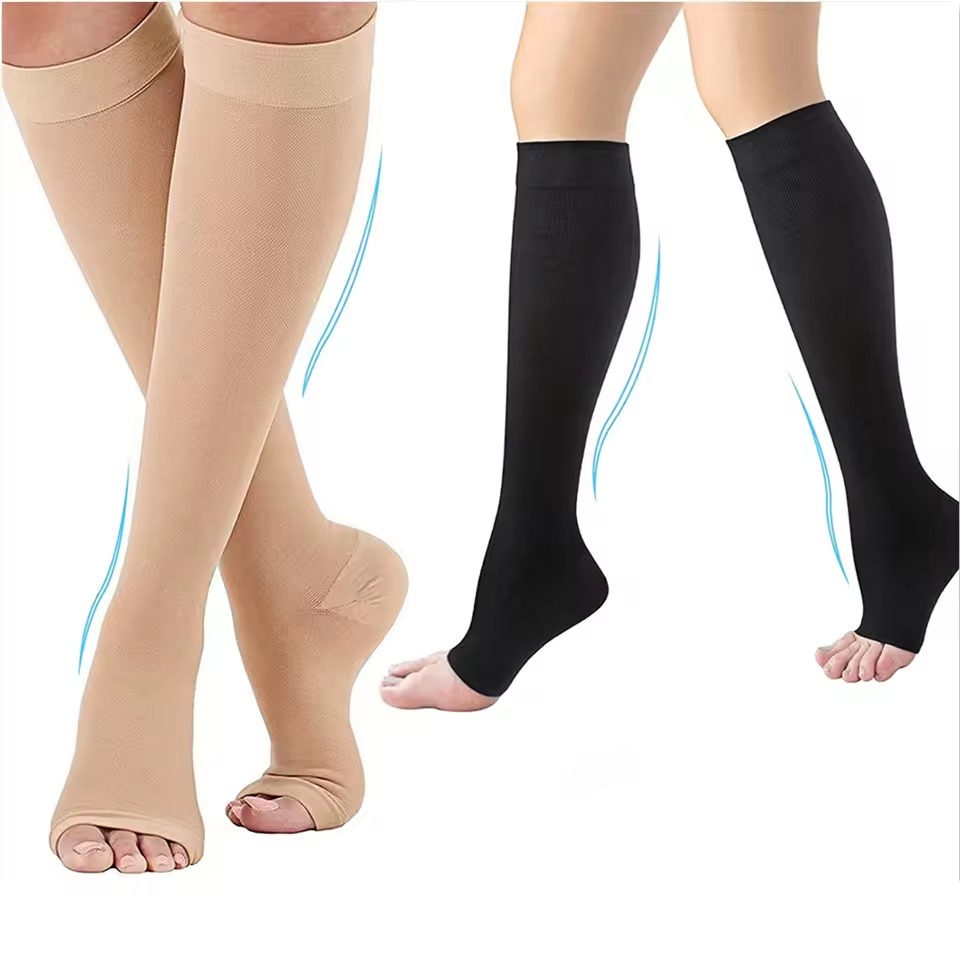
Tips for Wearing Compression Socks
Wearing compression socks for pregnancy can greatly benefit expectant mothers, but to ensure the utmost efficacy, it’s important to consider how you use them. Here are some practical tips:
- Wear Your Socks in the Morning: It’s best to put on your compression socks when you first wake up. This is when your legs are least swollen and the socks can be positioned correctly for optimal support throughout the day.
- Ease Them On: To make it easier, sit down and gradually roll the socks up your legs. Avoid pulling too hard, as this might damage the material or alter the distribution of pressure.
- Take Them Off Before Bed: Compression socks should be removed before you go to sleep unless otherwise advised by your doctor. This gives your skin a break and helps with natural blood flow while you rest.
- Keep Skin Dry: Before wearing the socks, make sure your skin is clean and dry to avoid irritation. Any lotions or creams should be fully absorbed.
- Monitor Skin Regularly: Check your skin for any signs of irritation or marks from the socks. If you see any adverse effects, consult with a healthcare provider.
- Stay Hydrated: Drinking water helps maintain healthy circulation. It can support the work your compression socks for pregnancy are doing.
- Follow a Schedule: If your healthcare provider has recommended a wearing schedule, stick to it closely to get the most benefit from your compression wear.
- Combine with Exercise: Pair your sock-wearing with light exercise such as walking, if possible. This boosts circulation further.
Remember, compression socks for pregnancy are there to support you, but they work best alongside other healthy habits. Whether you’re dealing with swelling, discomfort, or looking for preventive care, these tips can enhance your compression sock experience during pregnancy.
Safety Considerations for Pregnancy and Compression Wear
When including compression socks for pregnancy in your maternity care, safety is paramount. To ensure you’re using them correctly and safely, here are some key considerations:
- Consult Your Doctor: Before starting any new treatment, including compression wear, always consult your healthcare provider, particularly if you have pre-existing health conditions.
- Check for Proper Fit: Ill-fitting compression socks can do more harm than good. Ensure they are not too tight as this might cut off circulation rather than improve it.
- No Overnight Wear: Unless your doctor advises otherwise, do not wear compression socks to bed. Your legs need time to rest and circulate blood without additional pressure.
- Beware of Skin Changes: Be alert to any changes in skin color, temperature, or if you experience numbness. These could signify improper use or fit.
- Ease into Usage: Start wearing the socks for a few hours at a time to allow your body to adjust. Gradually increase as comfort permits.
- Stay Aware of Discomfort: Any new or increasing discomfort should be taken seriously. Remove the socks and consult a professional if needed.
- Consider Your Activity Level: If you remain active, ensure your compression wear is appropriate for your activity level and consult with a specialist for the best options.
By keeping these safety tips in mind, you can confidently use compression socks to help manage pregnancy-related discomfort while protecting your overall health and well-being.
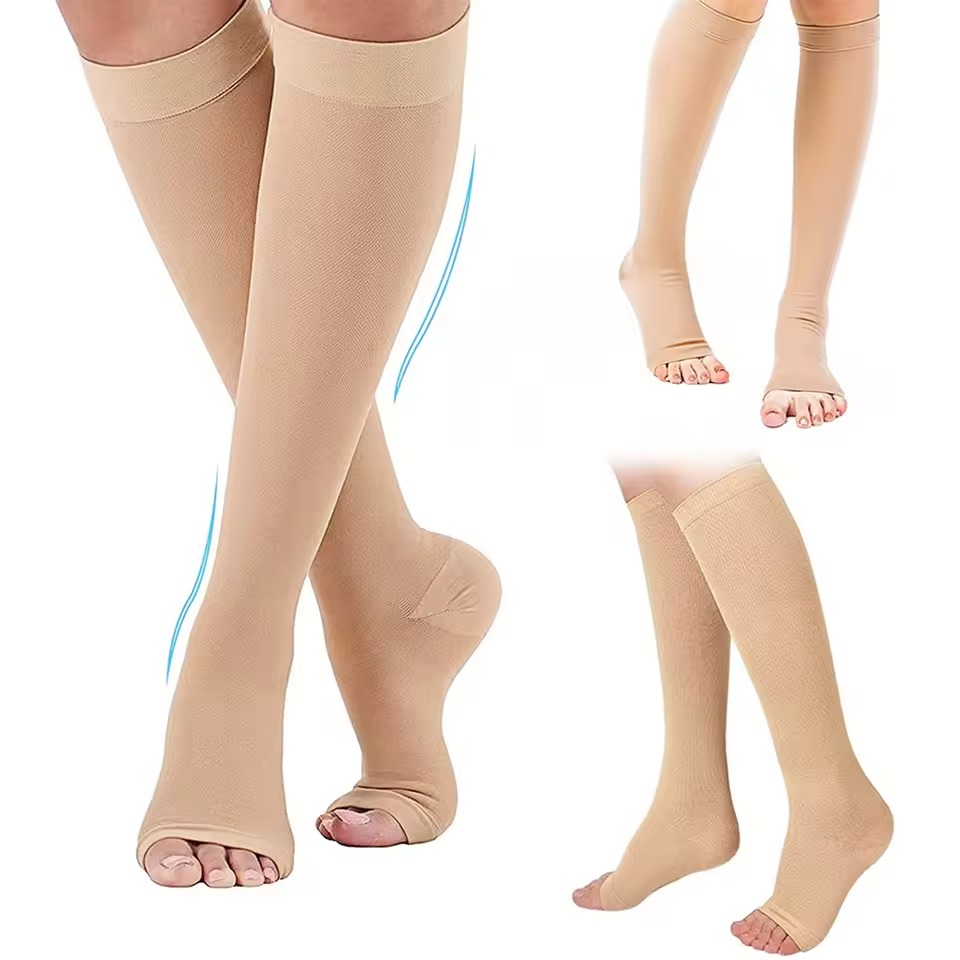
Best Practices for Maintenance and Care of Compression Socks
To keep your compression socks for pregnancy in top condition, follow these maintenance tips:
- Wash Regularly: Clean your compression socks after each use. Wash them gently with mild soap and cool water.
- Air Dry: Lay the socks flat to air dry. Avoid using a hot dryer as high heat can damage the elastic fibers.
- Roll to Remove: Rather than pulling from the top, roll the socks down your legs to take them off. This prevents overstretching.
- Keep Nails Smooth: Trim and file your nails to prevent snags and tears in the fabric of the socks.
- Rotate Pairs: If possible, have more than one pair of compression socks to rotate between washings. This extends their life.
- Avoid Bleach and Fabric Softeners: Strong chemicals can break down the material. Stick to gentle detergents.
- Inspect Regularly: Look for holes, tears, or stretched-out areas. Replace worn-out socks to ensure you get the right compression level.
By caring for your compression socks properly, you help maintain their effectiveness and comfort throughout your pregnancy.
Compression Socks vs. Other Supportive Wear During Pregnancy
When comparing compression socks to other supportive wear for pregnancy, it’s important to know their specific uses. While all aim to offer comfort and support, they do so in different ways. Here are the key distinctions you should be aware of:
- Compression Socks: These are primarily for leg and foot support. They boost circulation and reduce swelling, which can be common in lower extremities during pregnancy.
- Maternity Belts: These wrap around the lower abdomen and take some of the weight off the pelvic area. They’re good for back support but don’t offer much for circulation.
- Supportive Tights: Tights provide mild compression and can support the belly. However, their compression level is not as targeted as socks made specifically for leg and ankle swelling.
- Compression Leggings: These are similar to compression socks but cover the entire leg. They often offer belly support too but may not provide as much foot and ankle compression.
It’s vital to choose the type that best suits the specific issue you’re facing. For overall leg and foot concerns, compression socks for pregnancy are usually the go-to. However, if you need belly and back support, you might consider maternity belts or supportive tights. For full leg coverage, compression leggings could be beneficial. As always, consult your doctor to determine which supportive wear is most suitable for your pregnancy needs. By combining proper support with physical activity and good nutrition, you can help ensure a more comfortable and healthy pregnancy experience.



